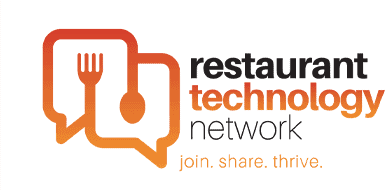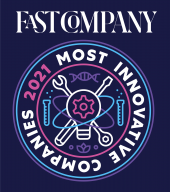Walking out of FS/TEC 2025 in Kissimmee, I’m left as energized as I am contemplative. For three days, the Gaylord Palms was buzzing with new ideas, emerging tech, and some serious tension between what could be done and what should be done. Here are some of my key takeaways from being there:
1. Technology’s Promise… and Its Frictions
One of the strongest current themes: there’s an almost universal recognition that while tech can offer serious upside (efficiency, insights, personalization), too often it introduces friction.
I sat in the Inside the Nest panel, where Jennifer Bell from Lettuce Entertain You shared a story about how her Gen Z son abandoned trying to use a restaurant gift card via the mobile app. Because the user experience wasn’t seamless, he just gave up. That really underlined: user friction isn’t just a buzzword… it affects business.
Another moment: Iwona Alter (Habit Burger & Grill) talking about how the number of “points of entry” for guests has multiplied―from dine-in, pick-up, delivery, curbside, etc. Each channel adds complexity, especially behind-the-scenes. The promise of tech is to manage that complexity, but if the integration is sloppy, it can make life worse.
So, bottom line: tech isn’t always the hero. It has to be implemented thoughtfully, with the user (guest and employee) in mind.
2. Hospitality as a Guiding Star
It was refreshing (and somewhat surprising) how many sessions pushed back against letting technology override the basic human aspects of dining. A recurring message: don’t lose what makes restaurants special—warmth, personality, connection. FS/TEC didn’t treat “hospitality” as charming background noise; it was front and center.
For instance, in “Pardon the Interruption – Restaurant Tech Edition,” there were conversations about balancing automation with human touch, keeping cashiers alongside kiosks because many customers still want that interaction. Eric Knott of Tiki Taco spoke about loyalty not just as point systems or tiered rewards, but building real community around the restaurant.
For me, this ties to a deeper question: What is “guest delight” now? It seems less about novelty and more about consistency, making sure every interaction (digital or in person) feels honest, easy, memorable.
3. AI Everywhere… but with Caution
You couldn’t avoid AI at FS/TEC. It showed up in loyalty, inventory, voice assistants, analytics, dynamic menu pricing, etc. But what was interesting was how often speakers tempered enthusiasm with caution. It wasn’t “AI or bust,” but “How can AI do this, how can it help us, and where are the risks?”
One session asked: “How does AI deliver real ROI, not just theoretical promise?”
Another asked: how do we use AI without stripping away the personality or turning guest interactions into sterile transactions?
And there was a strong voice about ethics and privacy: how much do we know about the data we collect, consent, how we handle user behavior, etc.
4. Loyalty, Digital Ordering, and the Guest Journey
These were table stakes. Brands are no longer debating if they need digital loyalty, app-based ordering, or delivery partnerships – they’re debating how to make them excellent. Which provider? How to reduce friction? How to integrate across systems so that loyalty, kitchen, delivery, and guest-facing touchpoints are all aligned.
Some of the sessions that stood out:
“Building Loyalty Programs That Scale With Your Brand” – the challenge is different for a single-unit operator vs. a national chain. Brand voice, guest expectations, and technological backend all have to scale.
Also “Is POS Dead?”, which was provocative. Not because POS is going away overnight, but because the question forces you to re-evaluate what you expect from your front-of-house technology—how much should it be integrated, how much should it be cloud, mobile, etc.
5. The Build vs. Buy Dilemma
DIY vs vendor solutions came up multiple times. Some brands are leaning into building proprietary tech (for brand differentiation, better control, custom integration), while others see value in buying off-theshelf tools and stitching them together. Both paths have pitfalls.
What I heard:
Building internal tools gives you more control, can reduce long-term costs, and allow you to tailor for your brand’s identity. But it needs strong technical leadership, maintenance discipline, and a clear roadmap.
Buying faster gets you to market, lowers initial burden, but risks misalignment, vendor lock-in, and often ends up costing more to customize or extend than planned.
What I’m Still Thinking About
Walking away, here are a few open questions that I believe many in the industry are wrestling with:
How to measure “softer” returns. Guest delight, employee satisfaction, community… these are harder to quantify, but I saw many speakers argue these are what make tech investments truly last.
Balancing pace of innovation with operational stability. Brands want to move fast, adopt new tools, be agile—but operations are unforgiving. If something breaks, guests notice.
How the next generation (employees & guests) will shape what “hospitality + tech” looks like. Gen Z, younger Millennials… they have different expectations. The channels they prefer, the interactions they value might be quite different.
What sustainability looks like in tech choices. Not just environmental sustainability but operational and financial sustainability: what tools you invest in, how you train staff, how you phase out legacy systems.
Final Thoughts
FS/TEC 2025 felt like a pivot point. Not because everything changed overnight, but because there’s a new urgency: as all restaurants – big and small – are being pushed to adopt and integrate technology, the real differentiators are:
- How well you do it (seamlessly, humanely),
- How aligned it is with who you are as a brand, and
- How you avoid chasing every shiny object and instead focus on what moves the guest experience forward.
Being there was inspiring and somewhat humbling. There’s a lot of promise, but also a lot of work to be done to balance efficiency, innovation, and the intangible “why guests choose you.”




